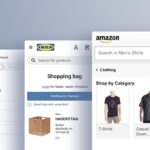Few areas of life and business have been left unaffected by the economic impact of the pandemic.
In Europe, for example, the payments ecosystem has changed considerably in the last two years, with an accelerated shift to online and contactless payments. There has also been significant growth in the subscription eCommerce market, as more and more consumers embrace subscriptions as a more convenient method of paying for the goods and services they regularly use.
Another developing trend in the payments sector, according to Nikhita Hyett, managing director for Europe at global payment orchestration platform BlueSnap, is the increase in embedded payments through apps and eCommerce sites, which is touching all aspects of people’s lives.
“If you want to book your kids into extra clubs, instead of having a bill at the end of the month that you’re invoiced for, you can book and pay for that extra club at the time, which not only improves the school’s cash flow, but also reduces the administrative burden on the establishment,” Hyett told PYMNTS in an interview.
The trend is also developing in business-to-business (B2B) payments as well, she added, with a huge increase in demand for software companies that want to integrate embedded payments in their digital payment options.
Related: BlueSnap Adds X-Border Payments Support For B2B eCommerce
It’s the reason why the U.K. company has recently launched an embedded payments suite and Payfac-as-a-Service offering for software platforms looking to scale their customer base globally and drive new revenue growth.
Overall, the new suite aims to improve the payment experience for software companies and their customers by making the process more convenient. According to Hyett, even a relatively small improvement to the customer experience can have a major impact on a firm’s bottom line, reducing shopping cart abandonment rates and boosting website checkout conversions.
Navigating EU Fragmented Market
Elsewhere, she said, operating in the fragmented European region can be a challenging feat for businesses that have to offer country-specific payment methods — France’s local card network carte bancaire, PayPal in Germany and iDEAL in the Netherlands, for example — in local currencies to meet the needs of customers in the region.
As a result, BlueSnap has seen an increasing number of companies, particularly those based in the United States, coming to them for advice on which payment methods to integrate when expanding in the region.
See also: BlueSnap Gets License To Keep Helping Israeli Companies With Finances
While they have a list of payment methods offered in each country, Hyett said the focus should be on finding the right payment method for local customers.
That could mean integrating a “split it” payment feature for high-ticket items being offered to consumers there, or adding wallets to the payment mix if mobile eCommerce shopping is popular in the market, she explained.
Moving forward, she said the London-based firm will continue to focus on enhancing its embedded payment solution by incorporating feedback from merchants, customers and the direct end-users.
“We listen to [customers] when they have a requirement or if there’s an additional payment method that they’re looking for — and if we see something that’s going to really benefit all of our customers, then we’ll bring that in,” Hyett said.
Sign up here for daily updates on all of PYMNTS’ Europe, Middle East and Africa (EMEA) coverage.







